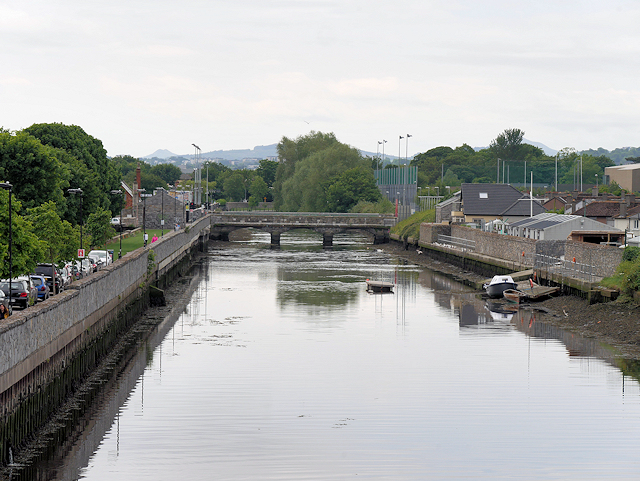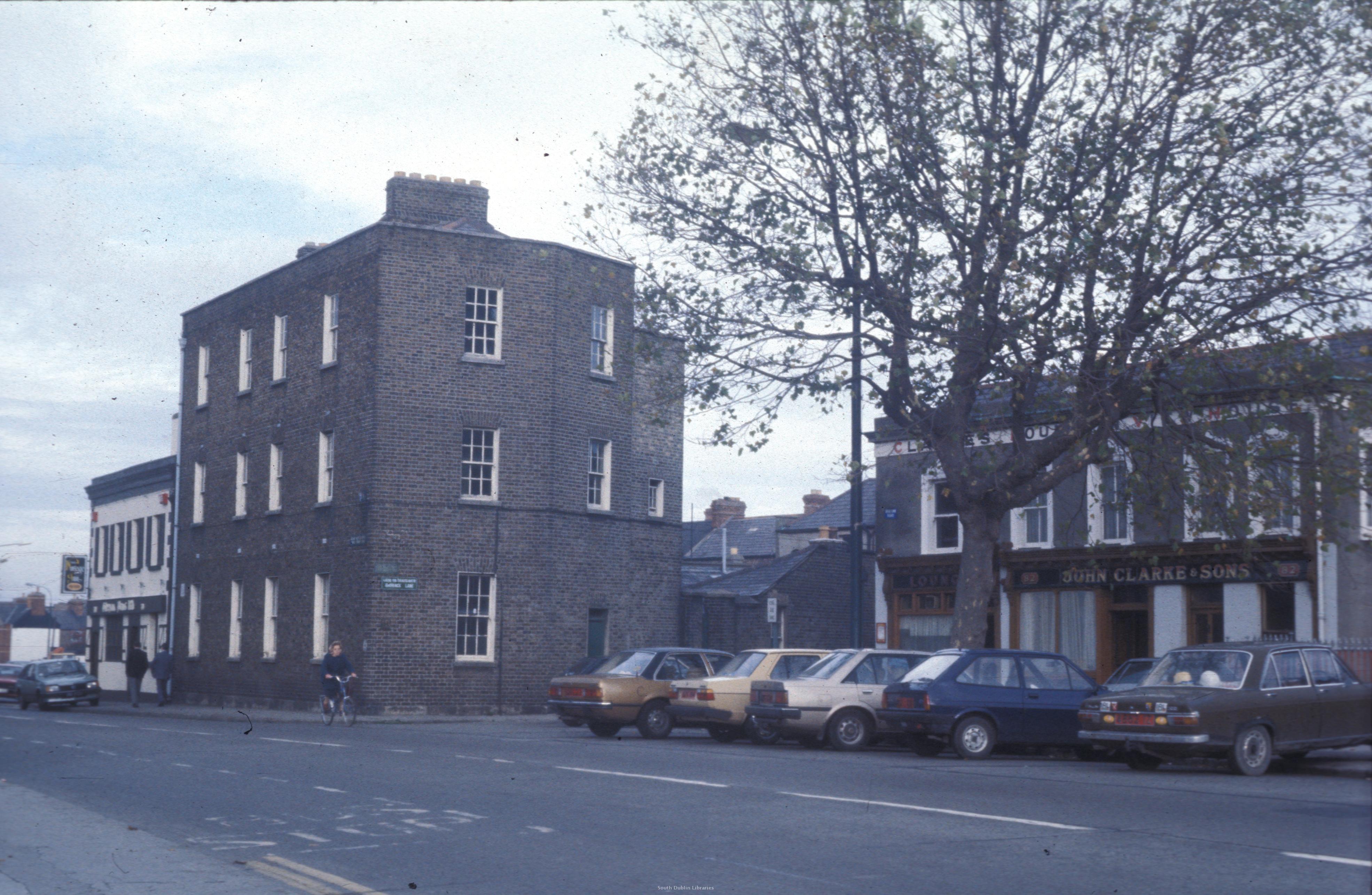THE DODDER
MYSTERY OF 1900
Chapter One
(OVER THE NEXT THREE DAYS WE WILL TELL THIS REMARKABLE STORY THAT IS
STILL CLOUDED IN MYSTERY.)
Irishtown on the
south side of the River Liffey is a residential suburb, home to what was
described in the early part of the twentieth century as the lower class. Many of
the local men were involved in fishing or working as Dockers at the nearby busy
Dublin port. Local man Frank Byrne was a busy postman on August 22nd
1900 with extra deliveries to the Sandymount area keeping him out well after
ten p.m. that night. As he made his way home along the banks of the River
Dodder, he noticed a man and a woman lying side by side between the New Bridge
at Lansdowne Road and Londonbridge Road Bridge. This sight of a courting couple
seeking some privacy along the banks of the river was not unusual as this area was
often frequented by the ladies of the night in the company of soldiers
stationed at the nearby Beggars Bush barracks and so he continued on his way
home to rest his sore feet.

The wall plaster
was cracked and crumbling, the picture of the Sacred Heart hung above the plain
metal bed. The Priest dressed in his long floor length black cassock dusty from
kneeling sat by the bedside with a set of rosary beads dangling between his
clasped praying hands. Two women sit at the back wall silently swaying, keening
and muttering prayers in the darkened room. Two flickering candles on a plain
bedside table offered the only ray of light. They bathe the sixty year old
woman in the bed in a gentle yellow glow of light.
The small tenement
bedroom on Cuffe Street located near the twenty two acres of St Stephens Green
was awaiting the passing of Carlow born Margaret Clowry. Sitting on a plain
wooden chair, the back of a it broken was an impressively dressed forty two
year old solicitor, his notebook on his lap and a pen poised to take dictation
as needed from Margaret and the last embers of life still pass through her
ailing body. It’s a damp and windy Thursday evening in the late 1940’s,
‘make sure you right this down,
you’ll not get a second chance’
said Maggie, her
voice croaking with emotion and pain. She lay silently starring at the plain
ceiling, gathering her thoughts, waiting for a pain surge to subside as she
then began to relate a story from almost fifty years earlier.
It’s Dublin as the
new Millennium arrives in 1900. Queen Victoria has been to Ireland on a State
visit in April, greeted enthusiastically by Union leaning Dubliners while many
more especially in poorer Ireland still hold the elderly Queen responsible for
some of the ills that befell Ireland during the Famine Years. The news of
fatalities locally born men serving with the British Army in South Africa
during the Boer War is the talk of the street corners and public houses as
names daily appear in the Freeman’s Journal or the Irish Independent. But by
August 1900, Margaret Clowry’s name would be at the heart of sensational
events.
‘On August 19th, I think it was a Sunday’
She began as the solicitor’s
pen began to cross the blank pages,
‘I was walking along Northumberland Road with my friend Bridget
Gannon. Bridie was a hard working parlour maid at the home of Ernest Harris, a
well-known solicitor in Dublin along with his brother Walter. They lived at 124
Baggot Street, a street renowned for their beautiful Georgian style buildings.
I myself at the time was between positions as a house servant, I had been
working at Carisbrooke House on the corner of Pembroke Road and Northumberland
Road and that’s where I first met Bridie a couple of years earlier when we were
both in service there. Even though she was a couple of years older than me we
got on very warmly and became friends.
I met up with my friend and we continued to walk past my old place
of employment and onto Northumberland Road heading in the direction of the
Grand Canal.’
Maggie and Bridie
were walking along when two local Dublin Metropolitan Policemen (DMP), who were
off duty and in civilian clothes, passed them on the street. Twenty nine year
old Thomas Dockery, Constable Number 117E, was born in Roscommon but was now
attached to the E Division of the DMP at Irishtown Barracks. Alongside him was
thirty two year old Henry Flower, a native of Kilcommock, near Ballymahon County
Longford who was born on August 14th 1867 to William and Susan (nee
Moran) Flower. He lost his father when he was just ten years old. The Flowers
were a family with a long and proud service in the Irish police forces. When
Flower originally passed out into the force, he was attached to C Division
based near the red light district of Dublin off Montgomery Street, the Monto,
on the Northside of the River Liffey. In 1899 he was transferred southside of
the Liffey to E Division and Irishtown Barracks. The girls knew the two
constables as initially Maggie went out with Dockery for a couple of years but
their relationship had ended. Flower was very taken with Bridie, who was a very
attractive woman, but their relationship, should there be one, would be much
frowned on within Irish society at the time and would also cause family
mistrust as Bridie was a Roman Catholic while Flower was an active Church of
Ireland member. Interfaith marriages at the time were forbidden and
relationships would cause ostracization within communities. The two constables
began to walk behind the girls and after a bit of small talk, Maggie began to
walk ahead of Bridie with Dockery walking beside her. About half dozen yards
behind were Bridie and Flower.

Bridie was a
strikingly good looking woman, five foot seven inches which was quite tall for
the period. While in mostly good health, Bridie was attending St Patrick’s Duns Hospital for
treatment of eczema on her arms. Just after quarter part ten on that autumn
Sunday evening the couples went their separate ways.
The following
Wednesday Bridie arrived at St Stephen’s Lane at the dwellings where Maggie was
currently living. Maggie was living at Number 5 Stephens Lane, a lodging house
run by Mary Hayes with as many as ten mostly servants staying at the house at
any one time. While Bridie’s leisure time off from work was sparse, she would
be off that night. She asked Maggie is she would join her that evening for a
walk as she had a prearranged meeting with Constable Flower and she did not
want to meet him on her own. She hoped to stop gossip on any possible
relationship with a protestant but in early twentieth century Ireland for a
girl or woman to have a policeman as a husband was highly desirable and sought
after.
Later that evening
Maggie walked up to the corner of Fitzwilliam Street and Baggot Street close to
where Bridie lived and worked. Wexford born Mary White was the housekeeper for
the Jewish businessman Ernest Harris and said later that she saw Bridie leave
just after seven o’clock. She was dressed in her best, a black skirt, a pink
striped blouse, a dark mantle with a fur collar and a white sailor’s hat with a
black band. She was in good form.
The two friends
walked along Baggot Street speculating on how the night might go. Bridie may
have been in confusion as she had approached her local parish priest for some
guidance but he advised that she stopped seeing anybody who may not have been
of the same faith as she was. At the top of Warrington Place at Baggot Street Bridge,
Flower was awaiting his date. He had left Irishtown police station just after
seven o’clock. He walked up Bath Avenue, passed Beggars Bush British military
barracks and onto the banks of the Grand Canal at Percy Place. After the
briefest of introductions, the three crossed the bridge and onto Upper Baggot
Street and as the ladies ate a small punnet of plums that Flower had bought
them in a shop just over the Bridge, he slipped
into Davy’s public house on Baggot Street at the junction of Waterloo Road.
Barmen Eddie Byrne
and Malachy Dwyer were on duty on that Wednesday afternoon August 22nd
1900. Both men who were Tipperary natives worked for William Davy also a
Tipperary native. Twenty one year old Malachy would later recall that the off
duty constable, whom he recognised as having frequented the pub in the past,
had just one pint of porter which he drank very quickly and left the pub where
he rejoined with Maggie and Bridie.
They continued to
walk until they reached Carisbrooke House at the corner of Northumberland Road,
the house to their left, across the road to their right the Trinity College
Botanical gardens and Ballsbridge and the River Dodder. Flower obviously did
not realise that Maggie Clowry was no longer working for Arthur Pollen and his
family. Pollen was a former Indian Civil Servant and now a non-practicing
barrister who lived in this stunning corner house with his wife Flora and their
daughter Sybil. Flower turned to her and said,
‘Are you going in? If you want to
take a broad hint’
It was just after
8.30pm.
Maggie no longer
wanted to play gooseberry, being left out of the intimate conversation taking
place between Flower and her friend. She said her goodnights and watched as
Flower and Bridie crossed the road and continued to walk down Lansdowne Road in
the direction of the nearby railway station. Maggie later recounted that she
met another local police detective McManus who walked back up Pembroke Road
with her as far as Baggot Street Bridge.
John Atwell was a
hard working employee of the local Pembroke Council whose headquarters were in
Ballsbridge. He was the night watchman at the Lansdowne Road railway station
and level crossing. Just after 9.30pm he noticed a man and a woman crossing the
tracks heading towards Newbridge Avenue. The timing would indicate that this
was Bridie and her gentleman but Atwell would later identify the couple as
Constable Dockery and another young woman named Lizzie Kavanagh. Lizzie
Kavanagh was described as a fallen woman who had been convicted and fined for
being a street walker, a lady of the night.
The grassy area
between Londonbridge Road Bridge and the Herbert Bridge along the edge of the
Lansdowne Road rugby grounds along the banks of the River Dodder was well known
as having been frequented by prostitutes for their illegal activities earning
hard earned cash from the soldiers based at Beggars Bush Barracks. Atwell also
recounted that shortly after this couple crossed over three soldiers crossed in
the opposite direction including a Colonel and a soldier who was loud and
seemed to be the worse for wear from the consumption of alcohol. The mystery
was about to unfold when young Paddy Keeffe from Bridge Street in Ringsend
would make a gruesome discovery.
Part Two Tomorrow


















